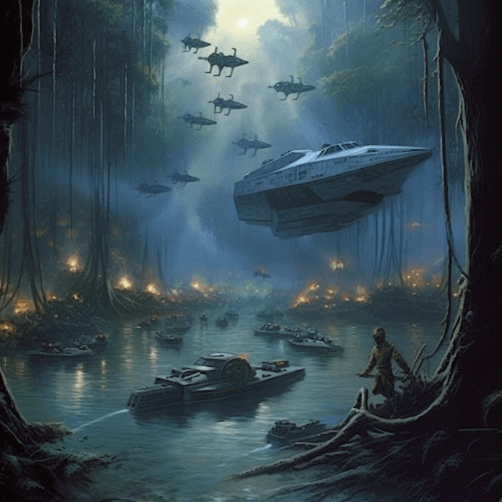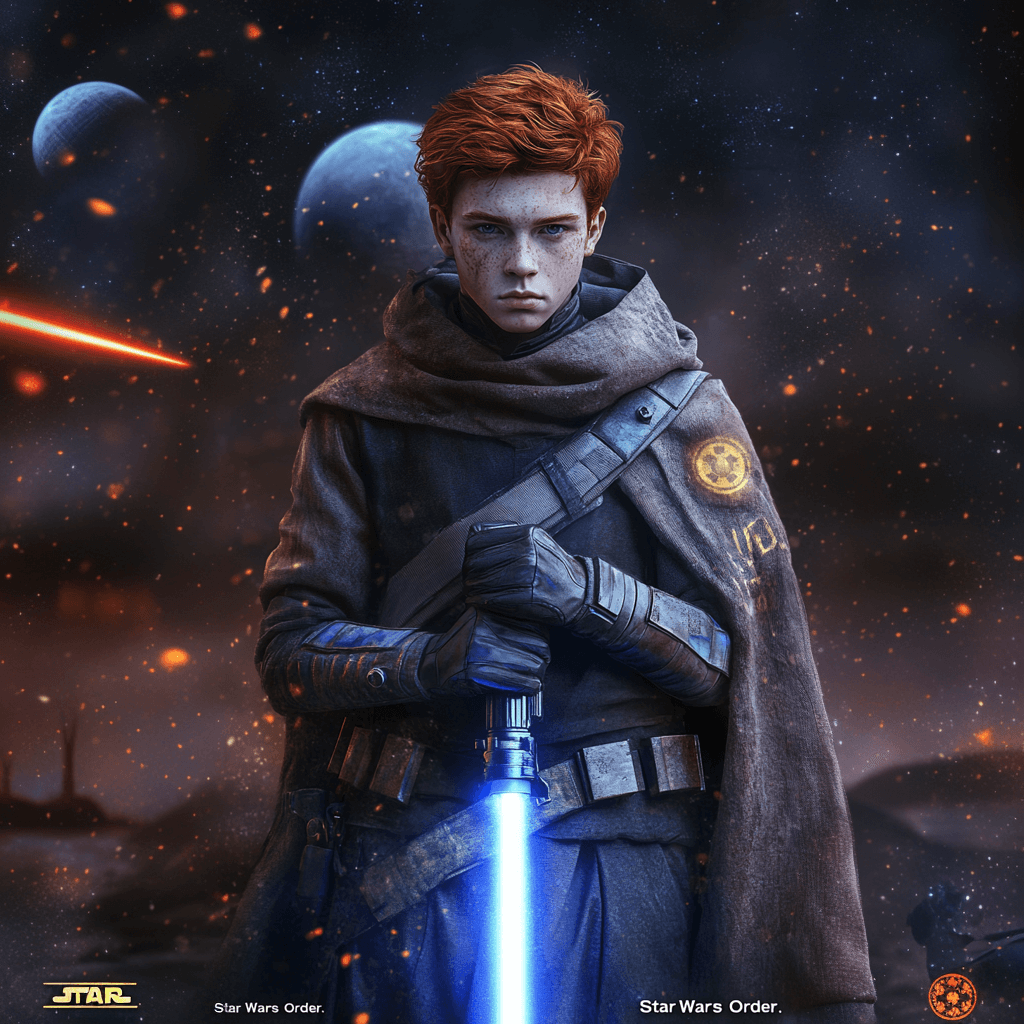Have you ever wondered exactly where Rogue One: A Star Wars Story fits into the larger Star Wars timeline?
Released in 2016, Rogue One quickly became one of the most beloved entries in modern Star Wars. Gritty, emotional, and brimming with tension, it told the untold story of how the Rebel Alliance secured the plans for the Death Star. Yet for many fans—especially those new to the saga—the question remains: where does it fall chronologically, and why is it so essential?
In this guide, we’ll walk through the timeline placement of Rogue One, how it connects to the Skywalker saga, and why it serves as a bridge between the rise of the Rebel Alliance and the desperate early days of their war against the Empire.
The Star Wars Timeline at a Glance
The Star Wars saga spans thousands of years of lore, but when most fans think about the timeline, they think in terms of the Skywalker saga: the prequel trilogy, the original trilogy, and the sequel trilogy.
- Prequel Trilogy (Episodes I–III): The fall of the Republic, the rise of the Empire, and Anakin Skywalker’s transformation into Darth Vader.
- Original Trilogy (Episodes IV–VI): The fight of the Rebel Alliance against the Empire, Luke Skywalker’s rise, and Vader’s redemption.
- Sequel Trilogy (Episodes VII–IX): The battle between the Resistance and the First Order, with Rey taking up the Jedi mantle.
So, where does Rogue One fall? Right between the prequels and the original trilogy—just before Episode IV: A New Hope.
Rogue One’s Place in the Timeline
Chronologically, Rogue One takes place in 0 BBY (Before the Battle of Yavin), essentially overlapping with the events that directly lead into A New Hope.
The film ends literally moments before the opening scene of Episode IV: Princess Leia’s ship, the Tantive IV, escaping Darth Vader’s Star Destroyer while carrying the stolen Death Star plans. This makes Rogue One the perfect prequel to the original trilogy—a connective tissue that explains how the Rebellion managed to exploit the Empire’s most terrifying weapon.
The Death Star Connection
The Death Star is central to Rogue One’s story and its place in the Star Wars timeline.
- In the prequels, we see hints of its design, with the Separatists beginning construction at the end of Revenge of the Sith.
- By Rogue One, the Death Star is nearly complete, with Director Krennic overseeing its weaponization.
- The superweapon represents the Empire’s absolute dominance, capable of crushing entire systems into submission.
The fact that Jyn Erso’s father, Galen Erso, secretly built a fatal flaw into the Death Star adds both tragedy and hope to the narrative. Without Rogue One, Luke Skywalker would never have been able to destroy the Death Star.
The Rebel Alliance in Rogue One
The Rebel Alliance in Rogue One is not yet the united, confident force we see later in A New Hope. Instead, they are fractured, uncertain, and hesitant to take bold risks.
The mission to steal the Death Star plans—undertaken by Jyn Erso, Cassian Andor, K-2SO, Chirrut Îmwe, and Baze Malbus—represents the first actual act of collective defiance. Their sacrifice unites the Rebellion, transforming it into a fighting force capable of challenging the Empire.
This moment of unity is why Rogue One is so vital to the Star Wars story. It shows how fragile beginnings gave birth to a galaxy-wide movement.
Learn more: After Andor, I Can’t Believe How Different These 15 Rogue One Scenes Are
Rogue One’s Darker Tone in the Star Wars Timeline
Unlike other films, Rogue One is not about Jedi prophecy or Skywalker destiny. Instead, it focuses on ordinary people—the spies, soldiers, and believers who fought in the shadows.
Its darker, war-film tone reminds us that the fight against the Empire was brutal and costly. While A New Hope gave us the optimism of the Rebellion’s first significant victory, Rogue One revealed the price paid to achieve it.
In the broader Star Wars timeline, it grounds the saga in sacrifice, reminding us that not every hero survives, but every action matters.
Key Timeline Connections to Other Star Wars Stories
- Direct Lead-In to Episode IV: The final moments of Rogue One connect seamlessly into the opening crawl of A New Hope.
- Cameos of Familiar Characters: Darth Vader’s devastating hallway scene, Bail Organa preparing to send Leia, and Mon Mothma leading the Rebellion—all bridge the prequels with the original trilogy.
- Future Storylines: Cassian Andor’s role in Rogue One set the stage for the Disney+ series Andor, which further explores the early days of the Rebel Alliance.
Read more: Star Wars Costumes for Women: From Princess Leia to Rey
Why Rogue One Matters in the Star Wars Timeline
Without Rogue One, the original trilogy would lack context for one of its central mysteries: how did the Rebels get the Death Star plans?
The film not only answers that question but also enhances the emotional weight of A New Hope. Luke’s destruction of the Death Star is not just a heroic act—it’s the culmination of countless sacrifices. When you rewatch Episode IV after Rogue One, every moment feels heavier, every victory more earned.
Fan Reception and Cultural Impact
Fans widely praise Rogue One for its authenticity, grit, and emotional resonance. Many even call it the best Disney-era Star Wars film because it respects the source material while expanding the saga in meaningful ways.
Its seamless fit in the Star Wars timeline makes it a fan favorite, particularly for those who wanted more stories set during the height of the Galactic Empire. And of course, Darth Vader’s final scene remains one of the most rewatched moments in Star Wars history.
Conclusion: Where Rogue One Belongs
So, where does Rogue One fit into the Star Wars saga?
- It’s the bridge between the prequels and the original trilogy.
- It explains the Death Star’s vulnerability and the Rebels’ first victory.
- It unites the Rebel Alliance into a true fighting force.
Most importantly, it reminds us that Star Wars isn’t just about chosen heroes—it’s about ordinary people making extraordinary sacrifices.
Explore more lightsabers and Star Wars collectibles here.
FAQs
Where does Rogue One fit in the Star Wars timeline?
Rogue One takes place immediately before Episode IV: A New Hope, in 0 BBY, leading directly into the original trilogy.
How is the Death Star involved in Rogue One?
The film shows the completion of the Death Star and the Rebel mission to steal its plans, revealing the flaw that allows Luke Skywalker to destroy it.
What role does the Rebel Alliance play in Rogue One?
They are fractured at first but unite after the sacrifice of Jyn Erso and her team, setting the stage for the events of A New Hope.
Is Rogue One part of the main Star Wars saga?
While it is a standalone film, it is deeply tied to the Skywalker saga and essential to understanding the early victories of the Rebel Alliance.
Why is Rogue One important to fans?
It grounds the saga in realism, sacrifice, and heroism beyond the Jedi, while fitting seamlessly into the broader Star Wars timeline.
✨ Follow us for more Star Wars inspiration:
💬 Do you think Rogue One is the best Disney-era Star Wars film? Please share your thoughts with us below!





Leave a comment
All comments are moderated before being published.
This site is protected by hCaptcha and the hCaptcha Privacy Policy and Terms of Service apply.